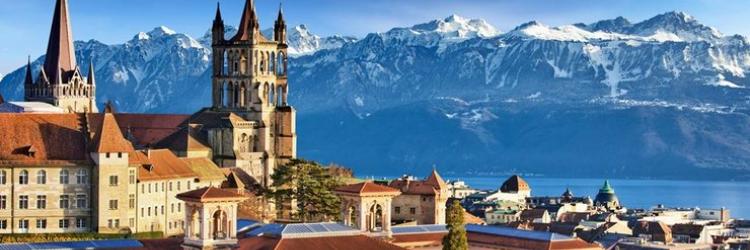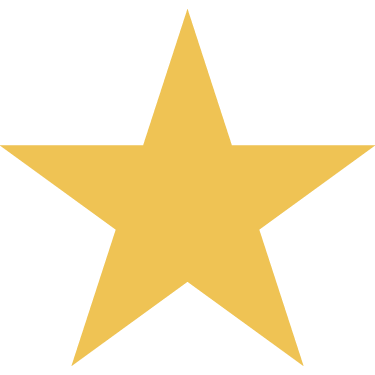Travel destinations Comments: 0 May 29, 2017
This hilly city belongs to Switzerland and takes the fourth place when it comes to size of the cities, but it is also the capital of the canton of Vaud. Lausanne, situated on a picturesque lakeside location of Lake Geneva, gives off a medieval hint thanks to its a grand Gothic cathedral in the very center, while the rest of the city boasts unique museums dedicated to various interests such as Art Brut and the Olympics. Throughout the year Lausanne’s citizens and its tourists are entertained by busy arts calendar, together with numerous activities beside the lake and on the lake itself. On one side Lausanne faces the French town of Évian-les-Bains, and due to that fact some of French culture has significantly influenced this city, and is regarded as a French-speaking region of Switzerland, as it is only 62 km far from Geneva itself, with the Jura Mountains to its north-west. Lausanne is famous as the "Olympic Capital" since 1994, and is in the spotlight of international sport, hosting the International Olympic Committee, the Court of Arbitration for Sport and some 55 international sport associations.
Cathedral of Notre-Dame: Built in the 13th-century , this medieval cathedral adorned with stone sculptures lies in the very center of the city. It amazes its visitors with its infamous rose window with more than 100 panels of remarkable stained glass and its Gothic interior featuring an organ of 6000 pipes. The early Gothic cathedral, which is now Protestant, is a famous landmark with its five towers rising above the city from the hilltop. The tradition that has been around for more than six centuries is that a night watchman calls out the hours from the 72-meter-high central tower from 10pm until 2am.
Place de la Palud: Lausanne’s oldest square with its winding streets of the old city is a famous meeting point of both tourists and locals alike. It is located below the cathedral and it is a strictly pedestrian zone. Here you can find and see Lausanne's oldest fountain, with Justice represented on its center pillar. The steps around the fountain are always swarming with people, as they all gather around the clock above, which shows animated scenes from local history every hour from 9am to 7pm. On Wednesday and Saturday mornings, market stalls known for their excellent home-made local farm produccts fill the square and its dazzling streets. Above the square is the the Town Hall, also known as the Hôtel de Ville, built in the 15th century, while the stained glass was added in the16th-century and the Hall modified in the 17th-century. It has arcades on the ground level, and on the facade are two copper gargoyles shaped as dragons.
Escaliers du Marche: This long covered flight of stairs is one of the most picturesque settings in Lausanne, built in the 13th century. The stairs start from the Place de la Palud and lead to the terrace in front of the main door of the cathedral, in that way connecting the market in Place de la Palud to the one above. Along the steps there is a row of beautiful buildings that date from the 16th century. For those who would like to take a break while climbing these stairs, the historic Café le Barbare is there to offer refreshments for everyone.
Olympic Museum: Known for its International Olympic Committee, it is only natural for Lausanne to have its Olympic Museum, which speaks volumes about the history of competitions through its artifacts. Overlooking Lake Geneva, the Museum has focused its attention on the spirit and values of the Olympics The recently renovated displays show the entire history of the games, from their origins in ancient Greece to the most recent, and include Olympic torches, historic posters, equipment, and clothing worn by Olympians. The museum is a heaven for sport fans as there they can relive the greatest moments from the Olympic Games through film clips and follow the evolution of sports technology and even fashion design.
Chateau d'Ouchy: The center of Lausanne is surrounded by the lakeside neighborhood of Ouchy, whose elegant Belle Epoch hotels are connected by a flower-lined promenade between the old and new ports. At the center of this stands a 12th-century castle, the Château d'Ouchy, where the peace treaty between Turkey, Greece, and the Allies was signed in 1923. Today the chateau is home to a luxury hotel and a fine-dining restaurant. Book-lovers can also witness a plaque dedicated to Lord Byron in the vicinity of the Hôtel de l'Angleterre, who wrote The Prisoner of Chillon here. Several historical treaties were signed in the famous grand hotels along the shore, including the Accord de Lausanne, where European powers agreed to suspend World War I reparations payments, signed at the opulent Beau-Rivage Palace in 1932.
Collection de l'Art Brut: founded by French artist Jean Dubuffet's, this museum represents one of the world's leading museums for outsider art, which besides Jean’s private collection of works, owns works of more than 1,000 by untrained artists, showcasing the mainstream community of Lausanne, which include naïve paintings, sculpture, masks, and works in a wide variety of media. Exibitions change on regular basis in order to follow current trends.
Flon Quarter: A sheer contrast to the ancient lakeside Roman settlement is Lausanne's ultra-contemporary new art zone, where designer-architects have created buildings regarded as futuristic. The basis for this state-of-the-art area is the former area of 19th-century warehouses, now filled with dramatic and colorful buildings where numerous shops, restaurants, business offices, designer galleries, and artists' studio spaces are located.
Lausanne can boast its impressive network of local, national and international public transport. Starting from the national and international passenger trains of the Swiss Federal Railways, which depart from Lausanne railway station, Laussane is connected with all major cities in Europe. The metro and local buses are operated by Transports publics de la région lausannoise (TL), with many routes run using trolleybuses.


 RS
RS  ME
ME  HR
HR  BA
BA  RU
RU  MK
MK  AL
AL  ES
ES  DE
DE  IT
IT  CN
CN  NL
NL  SE
SE  FR
FR 






Write a comment